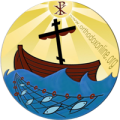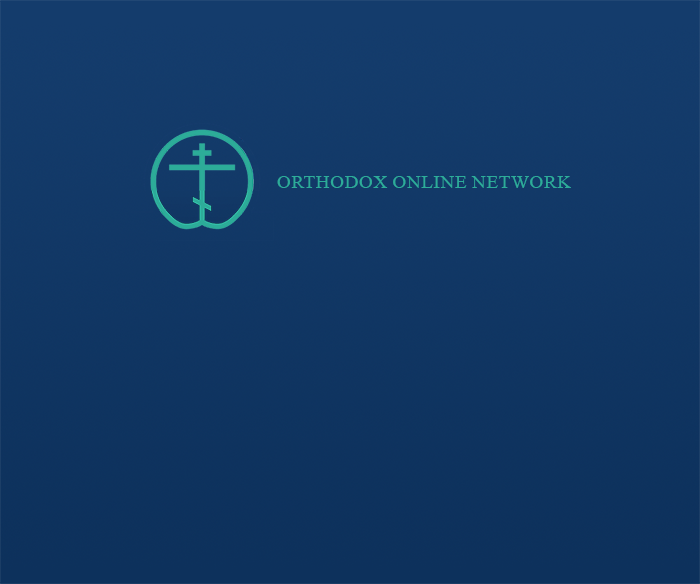We will answer this question from three aspects: 1- The chronological location of the Last Supper in relation to the Jewish Passover. 2- Characteristics of the Easter Last Supper. 3- How did New Testament Christians understand this dinner as a Passover dinner? (1).
First: The chronological location of the Last Supper in relation to the Jewish Passover: At twilight, which ends sunset on April 14 and begins with April 15, the Jewish Passover lamb is slaughtered and its blood is sprinkled on the doorsteps of homes. When lambs began to be slaughtered in the temple (this began before the days of Christ), the slaughter began several hours before sunset on April 14. After sunset on Nisan 14, Nisan 15 begins in the Jewish calendar. The slaughtered lamb is roasted and eaten with unleavened bread and bitter herbs. With the beginning of Nisan 15, the week of the Feast of Unleavened Bread begins. 600 years before the time of Jesus, these two feasts were combined together in such a way that the Biblical references to Easter or the Feast of Unleavened Bread became completely unclear to determine the date of either of them. The four Gospels agree that the Last Supper occurred on a Thursday, and that the crucifixion occurred on a Friday. However, there is a mismatch in the dating of the Jewish Passover during Holy Week between the Synoptic Gospels and the Gospel of John. To summarize this point, we will review these two dates in the following table:
| today | Thursday (Last Supper) | Friday (Cross) | Saturday |
| Synoptics | Nisan 14 (Jewish Passover) | April 15 (Unleavened Bread) | April 16 |
| Gospel of John | April 13 | April 14 (Easter) | April 15 (Unleavened Bread) |
In writing, there is no real contradiction between these two dates. A discussion of this point can be reviewed in writing in the aforementioned reference. John's dating is the most correct. Liturgically, the Orthodox Church adopts the history of John.
Second: The paschal characteristics of the Last Supper: There are clear paschal characteristics in the Last Supper (2). Briefly, these characteristics include:
The Last Supper took place in Jerusalem (Mark 14:13 and its parallels; John 18:1). In the last week, Jesus spent his night in Bethany (Mark 11:11 and parallels), while he ate the Last Supper in Jerusalem (crowded during the Passover pilgrimage season. The number of people was estimated to be more than 100,000), in order to maintain the Passover rule that the Passover should be eaten in Jerusalem.
- It happened at night (1 Cor 11:23; John 13:30; Mark 14:17; Matthew 26:20). Passover alone is eaten at night.
- He spoke with the Twelve (Mark 14:17; Matthew 26:20) in order to agree with the Passover rule that at least ten people should participate in it.
- They reclined at the table (Mark 14:18 and its parallels; John 13:21 and 23). Eaters recline on certain occasions (party, holiday, wedding). At the Passover dinner, participants recline to symbolize liberation from slavery (in celebration).
- Breaking of bread (Mark 14:22; Matthew 26:26). Mark 14:22 mentions a meal in which bread was broken after a plate was served. Passover is traditionally the only meal of the year in which a dish is served before the breaking of bread.
- Drinking wine (Mark 14:23 and its parallels). Drinking alcohol only occurs on special occasions (circumcision, engagement, wedding, sorrows), and on holidays (Passover, Pentecost, Feast of Tabernacles).
- Judas’ mandate to donate to the poor (John 13:29). The disciples assumed that Jesus had authorized Judas (John 13:26) to give something to the poor, “and it was night” (John 13:30). It is difficult to assume that Jesus would have been accustomed to giving alms to the poor at night unless the Last Supper was a Paschal supper where it was customary to do so.
- The Last Supper concludes with praise (Mark 14:26; Matthew 26:30). Praise concerns the Passover Supper and is different from thanksgiving at the end of each meal.
- Do not return to Bethany after dinner. Jesus returned to the Mount of Olives (Mark 14:26 and its parallels), to a garden east of the Kidron Valley (John 18:1), because the Passover night must be spent in Jerusalem, which in Jesus’ days included Bethphage, Bethany, the Kidron Valley, and the Garden of Gethsemane.
- Interpretation of bread and wine: Jesus explained the meaning of the bread and wine at the Last Supper. Interpreting the elements of the meal is an established part of the Easter ritual. The head of the family explains the elements of the Passover meal (the lamb, unleavened bread, and bitter herbs). Here Jesus gave a new interpretation, his own interpretation, of the elements of the Last Supper in a new way that refers to his sacrifice and his being the Paschal Lamb.
Third: How did New Testament Christians understand this dinner as a Passover dinner: Paul cited a tradition handed down to him (possibly dating back to the 1930s) of a Last Supper that occurred before Jesus' death (1 Corinthians 11:23-25). He asked his readers to purify the old yeast as much as they were unleavened, “for even our Passover, Christ, was sacrificed for us” (1 Corinthians 5:7). Christ rose from the dead and became “the firstfruits of those who have fallen asleep” (15:20). Therefore, Jesus’ death and resurrection in Paul’s mind are linked to the symbolism of the opening days of the Passover/Unleavened Bread season. Therefore, the Last Supper of Jesus was understood theologically by Christians as the Passover Supper, and they linked Jesus’ death to the sacrifice of the Passover lamb, so it became Jesus is the Passover Lamb (1 Peter 1:19). The Revelation of John (5:6-14) depicts Christ, within a liturgical framework of prayers and incense, as a slain lamb, whose blood bought people from every tribe for God. Mark 14:12-16 presents the Last Supper as a Passover supper Luke 22:15 Mark explains when Jesus began the Supper by saying that he desired to eat this Passover with his disciples before his Passion. It is clear that in this Passover Supper the words uttered in reference to the bread and wine give the body and blood of Jesus the main central place normally reserved for the lamb sacrificed in The Temple. This Lamb was never mentioned at the Last Supper in the Gospels, because Jesus is the Paschal Lamb here. As for John, he presented a vision of Jesus as the Paschal Lamb. Jesus is “the Lamb of God who takes away the sin of the world” (John 1:29, 36), and “ The blood of Jesus Christ, His Son, cleanses us from all sin” (1 John 1:7), and “it is the propitiation for our sins” (1 John 2:2). The soldiers do not break a bone for Jesus (John 19:33), completing a biblical description of the Paschal Lamb (Exodus 12:10). , 46; Numbers 9:12). Hyssop is used to raise a sponge filled with vinegar to the lips of Jesus (John 19:29), just as hyssop was used to sprinkle the blood of the Passover lamb on the doorsteps of the homes of the Israelites (Exodus 12:22).
Thus, the Last Supper was a Passover supper, in which Jesus was the Passover Lamb, as He offered His body and blood to those who believe in Him so that they might attain salvation. The Synoptic Gospels understood this supper as a Passover supper, but they did not take into account the chronology of the Jewish Passover, indicating that Jesus established his own Passover, a new Passover, in order to cancel the Jewish Passover. While the Last Supper was a Passover dinner for John, in which Jesus was the Passover Lamb who was slaughtered on the cross when the Jews’ Passover lambs were slaughtered in the Temple. Thus, the four Gospels agree in the same Easter theology (3).
About the book: You asked me and I answered you
Q 51
Dr.. Adnan Trabelsi
(1) See the detailed study in Biblical Studies in Part Three of Chrysostom’s commentary on the Gospel of Matthew.
(2) Joachim Jeremias The Eucharistic Words of Jesus. The MacMillan Company New York, 1955. p. 14.
(3) I mentioned in footnote 112, pp. 128-129 - from my book “O Jesus!” In the dispute in the West over the Last Supper. The difference between the Gospels regarding the date of Easter is superficial. They all agree that the crucifixion occurred on Friday, and the resurrection occurred on Sunday. Some, like the text here and the appendix to the French Dictionary, say that Jesus did not eat the Jewish Passover. Sober BJ says that Jesus advanced the date of eating the Passover by one day and ate the Passover lamb, thus ending the Jewish Passover, and then instituted the sacrament of thanksgiving (footnote to Luke 22:17). The commentary on the Gospel of Mark, which was translated from Greek by Father Avram Kyriakos, agrees with this. Recently, Alexander Men, a Russian Jew, said to advance the date and eat the lamb. He goes on to say that Chrysostom said to advance the appointment. He did not say this explicitly, but he considered Thursday dinner to be Passover and Friday evening to be Passover. (Espiro Jabour)

